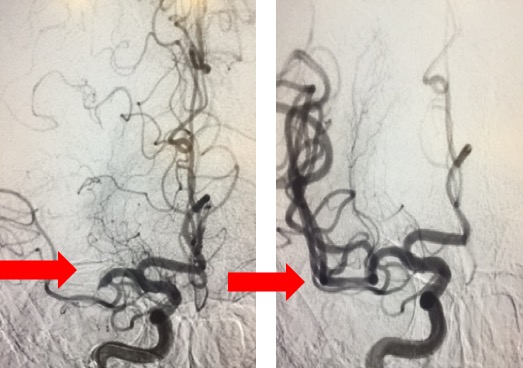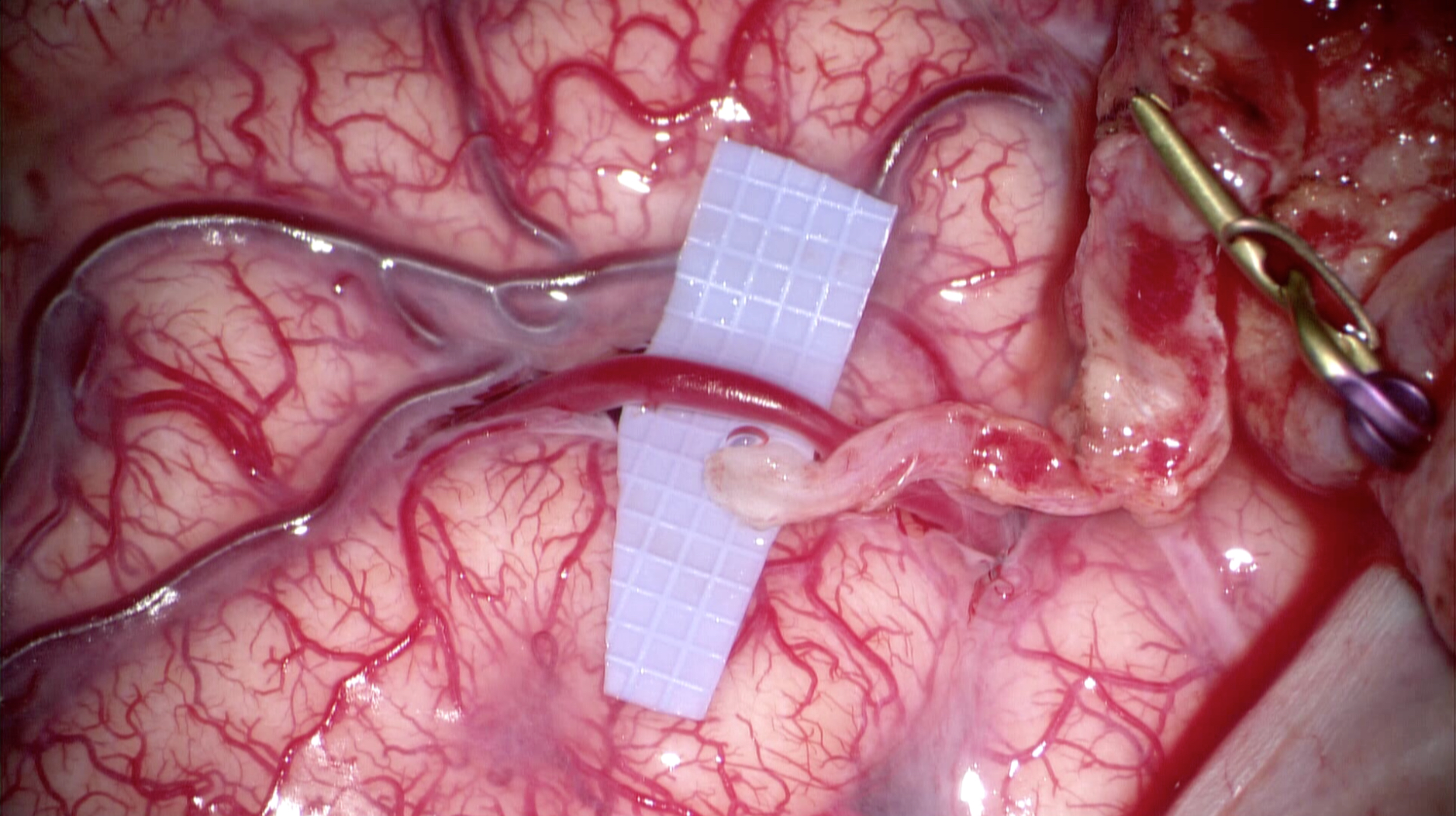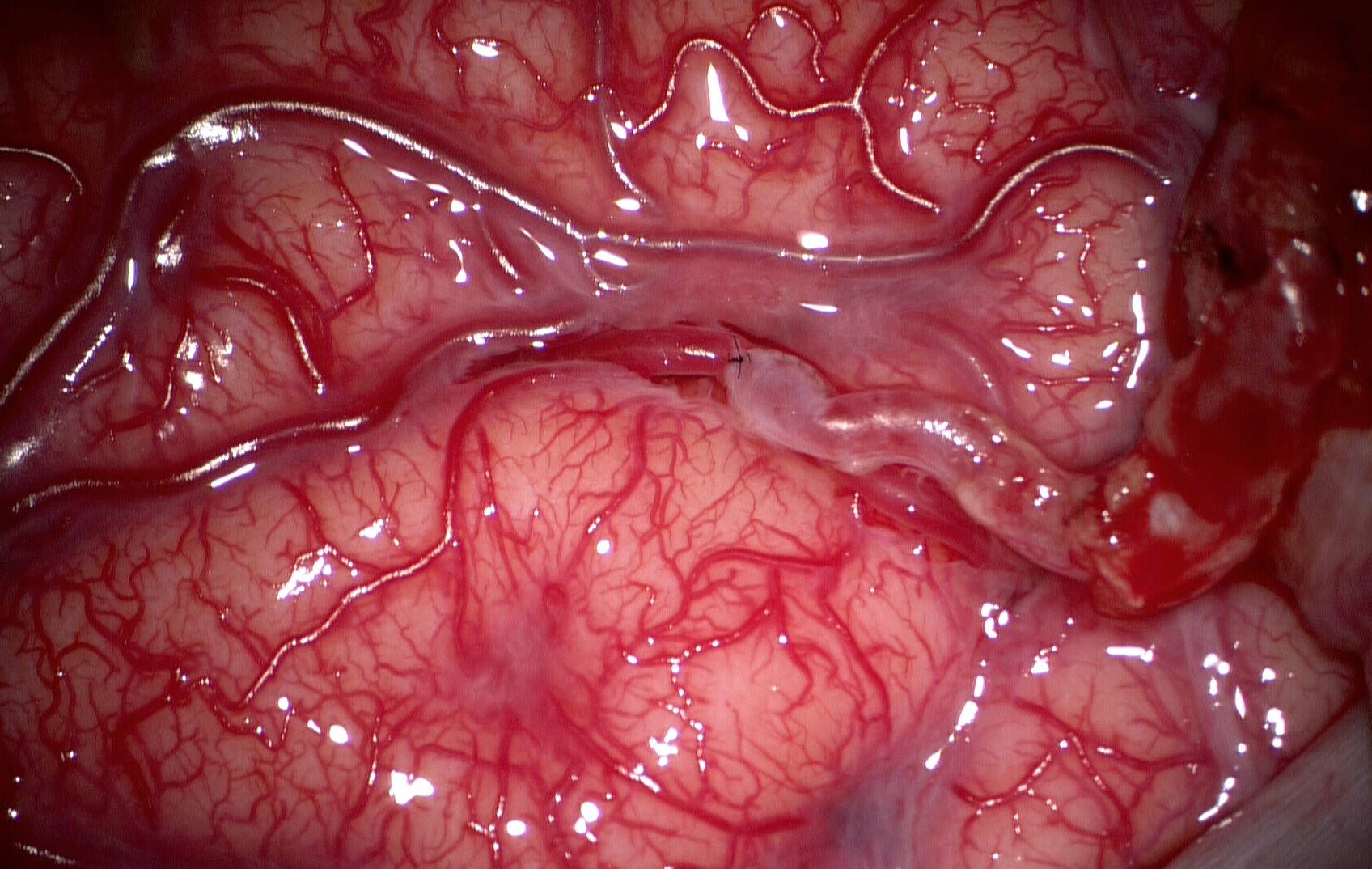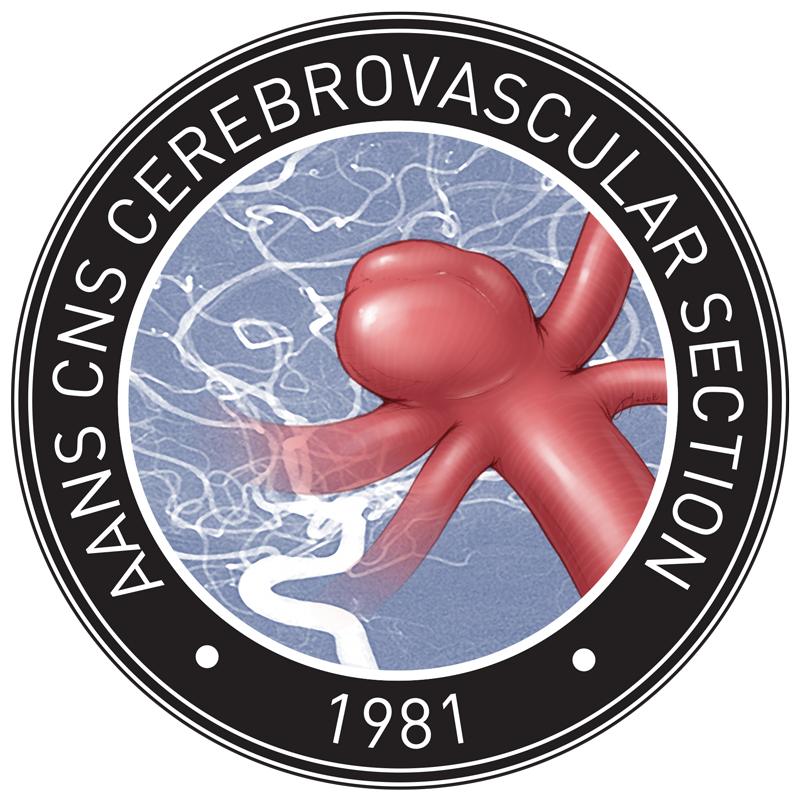Ischemic Stroke
What is an ischemic stroke?
Ischemic strokes occur when blood flow to the brain is blocked or insufficient to support cellular function. If blood flow is not restored or improved cells in the brain will die. This is different from a hemorrhagic or bleeding stroke in which blood leaks out of a burst blood vessel or vascular malformation.
What are the causes of ischemic stroke?
Diseases that can cause blood clots that can travel to the brain or local diseases of the blood vessels in the brain can cause ischemic strokes. Examples are:
- Carotid stenosis or narrowing of the arteries in the neck
- Atrial fibrillation that can create small blood clots in the heart that can travel to the brain
- Intracranial atherosclerosis
- Arterial dissections or tearing of the layers of the artery wall
- Moyamoya disease
What are the symptoms of an ischemic stroke?
Symptoms of ischemic stroke usually start suddenly and can affect one or both sides of the body. They can be subtle or dramatic but classically result in numbness and/or weakness of one side of the face and body. Sometimes the symptoms include problems speaking or understanding speech. Occasionally the symptoms resolve rapidly, however we still recommend being seen by a medical doctor if you have any symptoms that are worrisome for a stroke, even if they go away on their own. A list of typical symptoms:
- Sudden weakness/numbness on one side of face, arm and leg
- Trouble speaking or understanding speech
- Difficulty with balance and trouble walking
- Sudden change in vision with difficulty seeing out of one or both eyes
What are the risk factors for ischemic stroke?
Below is a list of some of the things that can increase the likelihood that someone will have an ischemic stroke:
- High blood pressure
- Diabetes
- High cholesterol
- Smoking
- Obesity
- Cardiac Disease – particularly atrial fibrillation
- Transient Ischemic Attacks or repeated stroke symptoms that resolve on their own
- Sickle Cell Disease
- Carotid Stenosis or narrowing of arteries in the neck
- Disease of heart valves
What should I do if I feel like I am having an ischemic stroke?
If you think you are having an ischemic stroke call 911! Do not delay calling for help. It is better to find out that you didn’t have a stroke then to miss the opportunity for treatment. TIME IS BRAIN! ACT FAST!
What should I do if I feel like I am having an ischemic stroke?
Treatments for ischemic stroke are based largely on how long the symptoms have been present. The less time that has passed the better. Several treatments are currently available for ischemic stroke:
- tPA is clot busting medicine that can sometimes be used to dissolve the blockage. This medicine is given through a normal IV can be administered at a large number of hospitals. Some patient’s cannot be given this medication because of bleeding disorders, recent surgeries or because the symptoms have been present too long.
- Clot retrieval is a relatively new treatment that is performed at select hospitals that specialize in stroke treatment. This procedure is performed by passing catheters into the brain using x-ray guidance and actually suctioning out or grabbing and pulling out the blockage. This technique has recently shown improved patient outcomes in multiple studies and is becoming more widely available. The image below demonstrates the dramatic results of these new techniques. The image on the left shows a blockage of the middle cerebral artery and the image on the right shows the results of clot retrieval with opening of the artery and restoration of blood flow.

Bypass surgery is performed in rare cases when patients have narrowing or blockage of an artery that has resulted in symptoms or puts them at high risk for stroke. These procedures create detours around the areas of narrowing or blockage that allow for improved blood flow to the brain. Select centers around the country that specialize in stroke treatment perform these procedures. The following images show the preparations for a bypass (top image) and the results of a completed bypass (bottom image).


What is a Stroke Center?
Because of the success of newer stroke therapies like the clot retrieval mentioned above many hospital systems are focusing on improving stroke care. In many cases this has involved the certification of various hospitals as primary (PSC) or comprehensive stroke centers (CSC). Simply speaking a primary stroke center has the ability to give tPA (clot buster) but may not have clot retrieval services available 24/7 while it is the responsibility of the comprehensive centers to have such availability of clot retrieval (or endovascular services). There is also going to be a stronger presence of intensive care unit care at the CSC. There is some variability in the capability of different CSCs based on the pathway to certification that was followed. It is important to understand the capabilities and reputation of stroke centers in your area.
